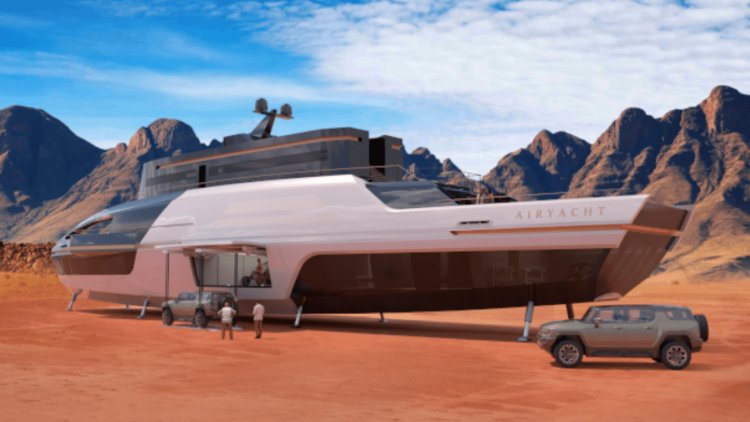AirYacht: Yacht and airship in one

Sailing the world's oceans on a boat is fantastic, but what if you want to travel by land as well as water? AirYacht, which combines an airship and a yacht, is specifically developed for this purpose.
The Swiss business AirYacht, created by engineers Guillaume Hoddé and Matthieu Ozanne, is developing the luxury aircraft/vessel. Its look is the work of French yacht designer Franck Darnet. The AirYacht is made up of two parts: a helium-filled airship and an aerodynamic yacht connected to the lower part.
During the flight, the yacht acts as the airship's gondola, housing the crew and up to 12 passengers. However, if the owner wants to sail the sea, the yacht can be disconnected from the airship, lowered through cables, and then released when it reaches the water's surface. In the other direction, the yacht can be dragged back onto the airship.
Of course, it must float close enough to the water during this operation. If the owner wishes to remain on land for an extended period of time, he can lower and release the boat once more, this time settling on the ground in the manner of a cabin via a system of struts protruding from its hull.
If the trip on land is brief, a 12-person lift can be deployed from the yacht's bottom while the yacht remains attached to the airship. The airship should be self-sufficient for up to a week, depending on parameters like cruise speed and number of passengers/crew.
The airship will be 200 meters long and will travel at speeds of up to 50 knots (93 km/h) thanks to a hybrid fuel-electric propulsion system. The yacht's three-story component will be 52 m long, 13 m wide, and 11 m high, with five to six cabins.
It will be able to accommodate a 12-member "guest crew" in addition to 12 passengers and three flying crew members. A front and rear sun terrace, a jacuzzi, sauna, swimming pool, a heliport, and a garage to park a car, boat, or jet ski are among the amenities.
AirYacht has apparently been in development since 2017, with the first model expected to be operational in 2026. Following that, it is intended to create one to four every year.





























